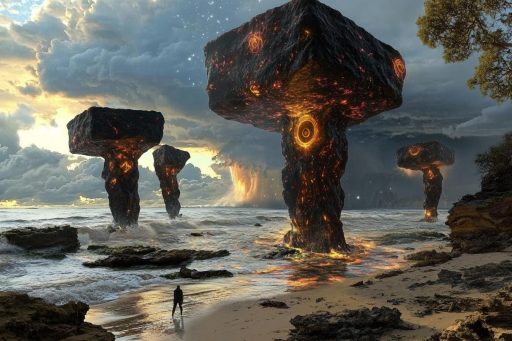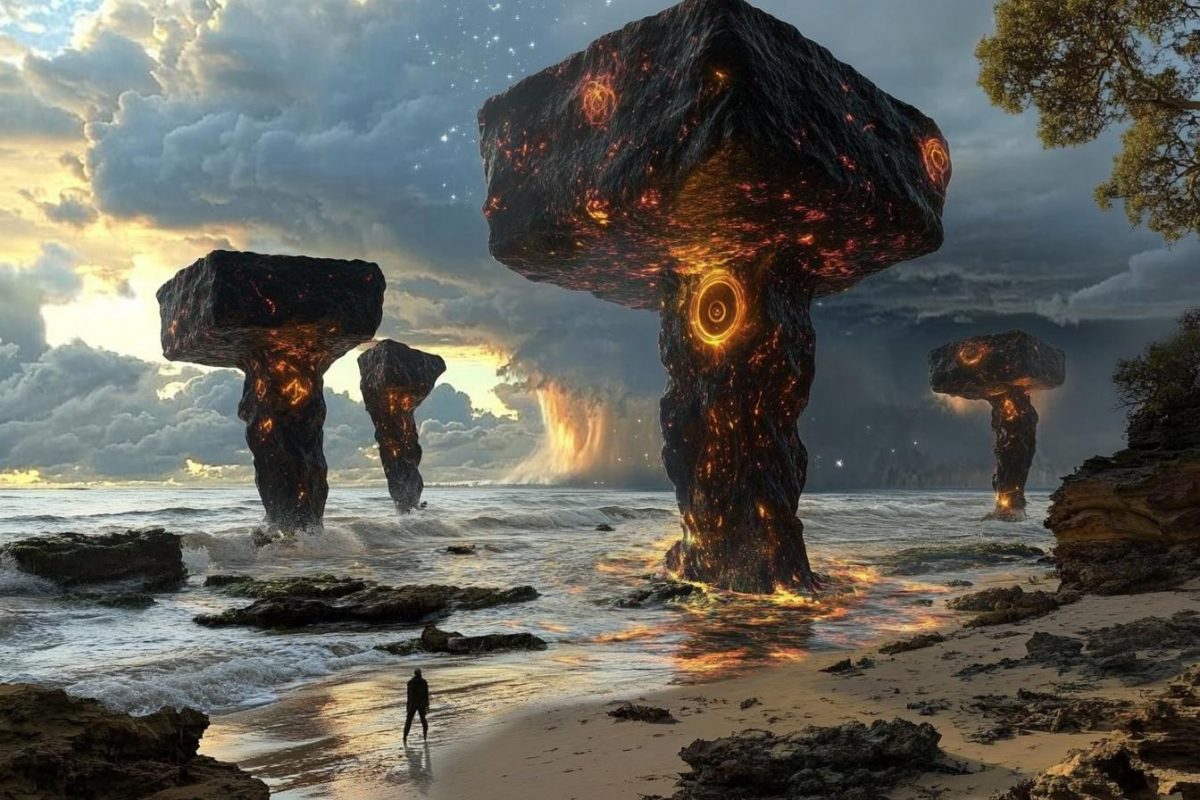
Towering, silent, and impossible to ignore, monoliths have captured the human imagination for centuries. Found in deserts, deep forests, icy expanses, and even underwater, these massive stone structures are often unexplained and seemingly out of place. Some are remnants of ancient civilizations, while others appear overnight with no origin. Whether relics of lost knowledge or markers from something beyond, each monolith dares us to ask: who placed them—and why?
The Black Desert Monolith, Egypt

In the remote Egyptian Black Desert stands a polished black stone monolith, seemingly untouched by time or erosion. Its placement and construction remain a mystery, with no nearby quarry or historical record to explain its presence. Some believe it may be an ancient astronomical marker, while others suspect a modern hoax. But its unweathered precision begs deeper questions about its origin and purpose.
The Utah Monolith

Discovered by a helicopter crew in 2020, the mirrored Utah monolith was hidden in a red rock canyon with no clear path for transportation. It vanished as suddenly as it appeared, only to be followed by similar monoliths around the globe. Theories ranged from artistic expression to alien beacons, but no one claimed responsibility. Its appearance sparked global intrigue, turning a slab of metal into a modern myth.
The Underwater Yonaguni Monument, Japan

Off the coast of Japan lies a submerged stone structure that appears to have terraces, steps, and flat surfaces too precise to be natural. Some experts argue it’s an ancient sunken city, while others insist it’s a geological formation. The lines between nature and design blur here, leaving divers and scholars puzzled. If human-made, it could rewrite the timeline of civilization in the region.
The Atacama Desert Monolith, Chile

In the driest place on Earth, a solitary metallic monolith juts out of the barren landscape. With no tracks, construction evidence, or nearby tools, its presence is an enigma. Some suggest it was placed to mirror the mysterious Utah structure, but locals claim it’s been there far longer. Its reflective surface stands in stark contrast to the desolation around it, as if waiting for something—or someone.
The Arctic Ice Monolith

In the icy wilderness of the far north, researchers stumbled upon a tall, jagged monolith embedded in a glacier. Unlike surrounding ice formations, this stone pillar seemed purposefully carved and unnaturally placed. Some believe it could be a remnant of a prehistoric structure once standing before the ice age. Others whisper that it’s a message—or a warning—meant to be revealed only as the ice recedes.
The Amazon Stone Pillar

Deep in the Amazon jungle, where few dare to tread, stands a moss-covered stone monolith engraved with unknown symbols. It appears to be aligned with the stars and solstices, hinting at advanced knowledge lost to time. Researchers debate whether it belonged to a forgotten civilization or is something even older. Whatever its origin, the jungle seems to protect it—as if guarding a secret.
The Mirror Monolith in Romania

Soon after the Utah monolith disappeared, a similar one appeared in Romania near an ancient fortress. Unlike its American counterpart, this one had strange etchings on its surface that no one could decipher. It stood for only a few days before vanishing without a trace. Was it a coordinated stunt or a series of unexplained events echoing one another across the world?
The Standing Stone of Callanish, Scotland

Older than Stonehenge, the Callanish Stones include one massive monolith at their center. Some believe it once formed part of a druidic observatory, tracking lunar cycles and eclipses. Others think it served as a spiritual gateway between worlds. Whatever its role, the central monolith has become a beacon of ancient power and alignment that science still hasn’t fully understood.
The Desert Beacon of Namibia

In Namibia’s Namib Desert, explorers found a monolith shaped like a tuning fork, standing upright in isolation. Its metal surface hums faintly when the wind passes through it, giving rise to speculation about its acoustic properties. Was it a device to communicate across vast distances? Or perhaps a navigational tool for ancient travelers? Its origins remain unknown, and local tribes avoid it entirely.
The Monolith of Silbury Hill, England

Buried beneath Europe’s largest artificial mound lies a stone monolith that predates many recorded cultures. Ground-penetrating scans revealed the stone’s presence, but its purpose is still debated. Some suggest it was meant to amplify Earth’s energy fields, while others tie it to ancient rituals of rebirth. Hidden and unmoved for millennia, it silently waits beneath the soil, keeping its secrets close.
The Black Pillar of Nyalem

Discovered in a remote jungle region and nearly swallowed by vegetation, the Black Pillar of Nyalem emits a faint hum and seems impervious to any known tools or weathering. Its smooth, obsidian-like surface is inscribed with an indecipherable script that defies all known language structures. Locals believe it marks the resting place of a celestial visitor, while some researchers suspect it’s not of this Earth at all. Despite advanced analysis, its origin and purpose remain an unbreakable riddle.
The Silent Giants Below

Monoliths are more than just stone—they are riddles carved in silence, left to weather the ages while watching us from beyond time. Whether created by ancient architects, modern minds, or something entirely unknown, they continue to provoke wonder and speculation. Each monolith hints at a story we haven’t yet heard or understood, a deeper truth buried in shadow. And perhaps they’re not just remnants of the past—but messages for the future.





